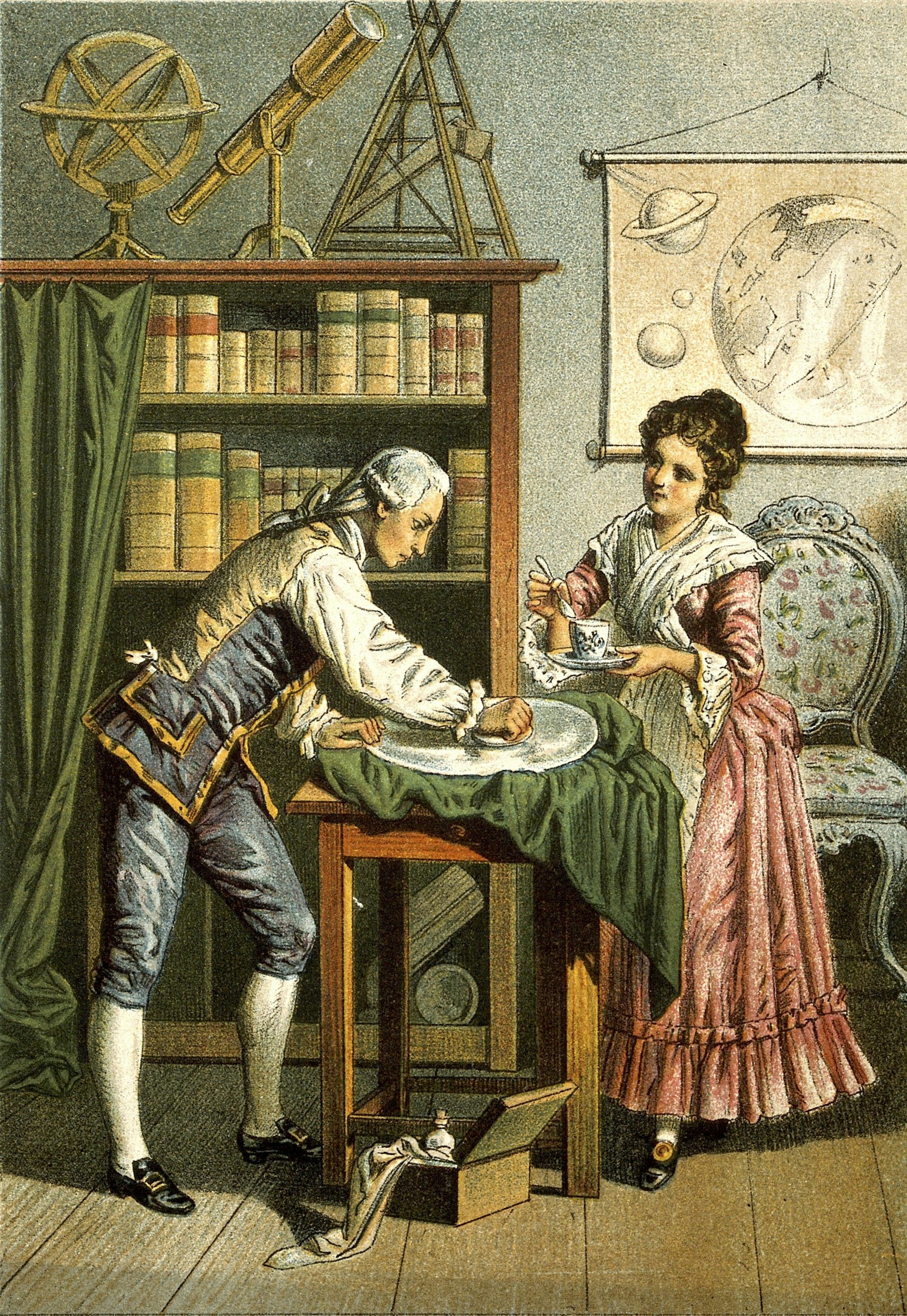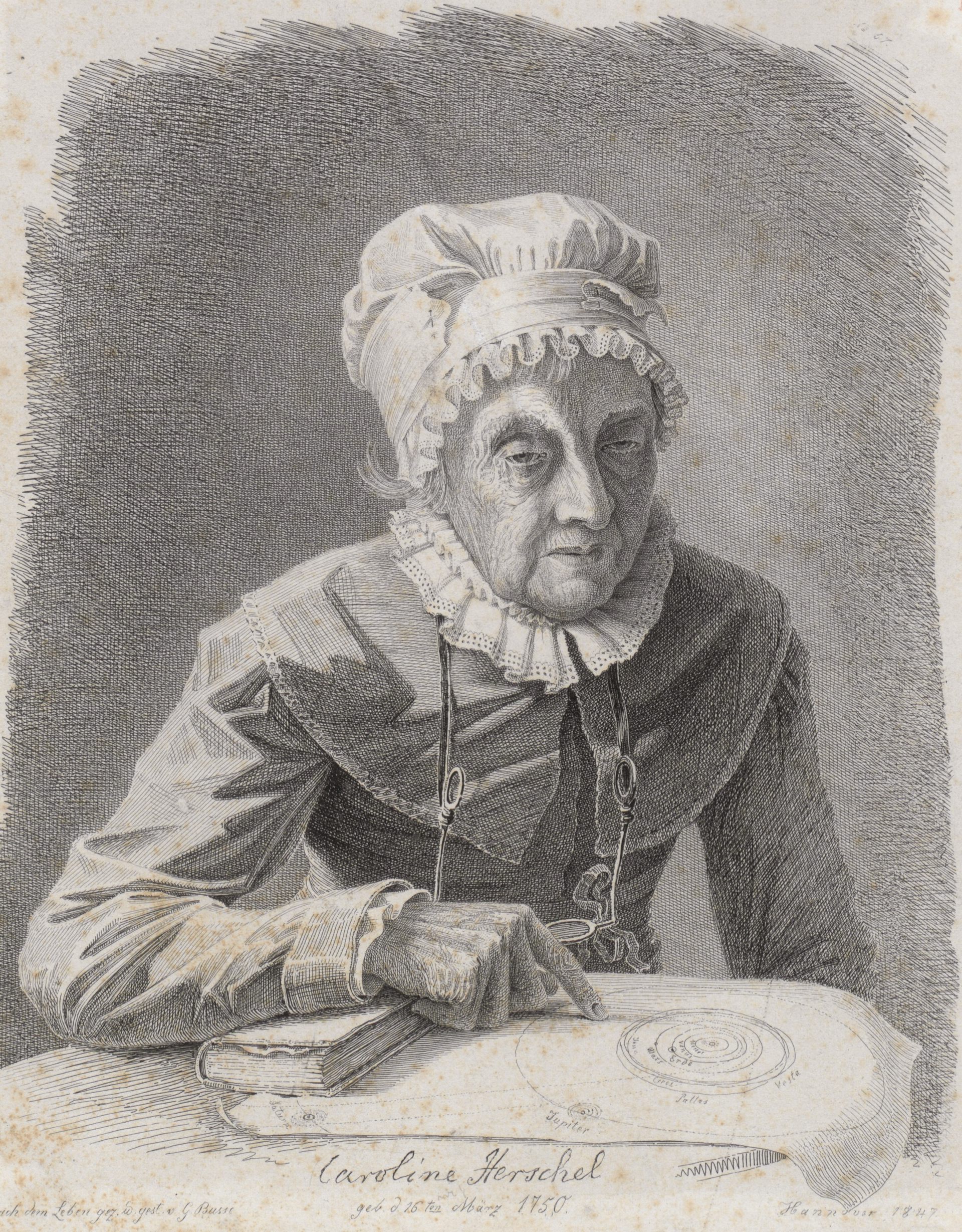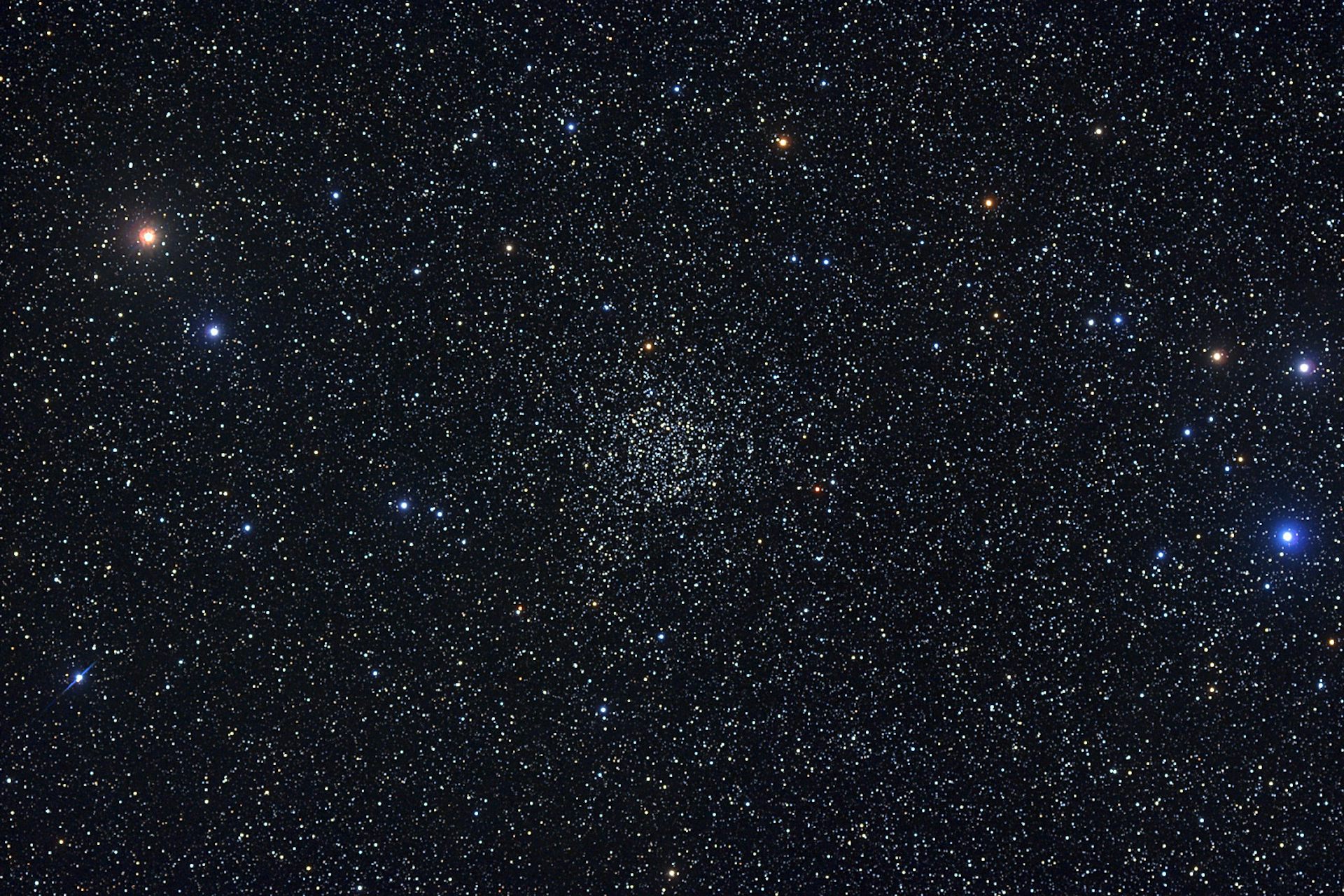
Caroline Herschel was the first female astronomer, but she still lacks name recognition two centuries later
Caroline Herschel, the first professional female astronomer, made contributions to astronomy that are still important to the field today. But even many astronomers may not recognize her name.
Most scientists care about the newest techniques, data and theories in their field, but they often know very little about the history of their discipline. Astronomers, like me, are no exception.
It wasn’t until I taught an intro to astronomy class that I learned about Caroline. Now, thanks to a new display of her papers at the Herschel Museum in Bath, England, others will get to learn about her too. Her story reflects not only the priorities of astronomy but also how credit is assigned in the field.
Her path to astronomy
Caroline Herschel, born in 1750, did not have an easy childhood. After a bout with typhus left her scarred at a young age, her family assumed that she would never marry and treated her as an unpaid servant. She was forced to complete household chores, despite showing a keen interest in learning from a young age. She eventually escaped her family to follow her older brother William Herschel, whom she adored, to Bath.

Caroline was a somewhat unwilling astronomer at first. She didn’t become interested in astronomy until William was already thoroughly engrossed in the subject. Although she spoke somewhat disparagingly about how she followed her brother to different interests, including music and astronomy, Caroline eventually acknowledged her real interest in studying astronomical bodies.
Astronomers at the time were mainly interested in finding new objects and mapping out the heavens with precision. Using telescopes to look for new comets and nebulae was also popular. William Herschel became famous after his discovery of Uranus in 1781, though he mistook the planet for a comet at first.
At the beginning of her career, Caroline worked as William’s assistant. She focused mostly on astronomical instrumentation tasks, like polishing telescope mirrors. She also helped copy catalogs and took careful notes about William’s observations. But then she began to make her own observations.
Searching the skies
In 1782, Caroline began recording the positions of new objects in her own logbook. It was through this work that she discovered several comets and nebulae. On Aug. 1, 1782, she discovered a comet – meaning she was the first to see it in a telescope with her own eyes. This was the first comet discovery attributed to a woman. She went on to discover seven more comets over the next 11 years.

At the time of the Herschels’ work, it was the actual observation of an object that warranted public recognition, so Caroline was given credit only for the comets she saw through the telescope herself. For all of her other work, like recording and organizing all the data from William’s observations, she received less credit than William.
For instance, when Caroline took all of William’s observations and compiled them into a catalog, it was published under William’s name. Caroline is mentioned only as an “assistant” in the paper.
Nonetheless, in recognition of her discoveries and her work as William’s assistant, King George III of England granted Caroline a salary, making her the first professional female astronomer.
Later in life, Caroline reorganized the same catalog in a more efficient way, according to how practicing astronomers interested in looking for comets actually observed the night sky. This updated catalog was later used as the basis of the New General Catalogue, which astronomers still use today to organize the stars.
The Herschels also created the first – though not quite correct – map of our galaxy, the Milky Way.
Who gets the credit in astronomy?
Recognition for scientific work within the astronomical community is pretty different now than it was in the Herschels’ day. In fact, most of the astronomers who receive credit today are those whose work looks a lot like Caroline’s – recording and organizing data about astronomical observations.
Astronomers seldom put their eyeballs up to a telescope eyepiece anymore, and many of the most important discoveries are made by telescopes in space. But astronomers still need to be able to make sense of all the data from these telescopes. Catalogs like the ones Caroline made are important tools for doing so.
Most people today haven’t heard of Caroline Herschel. Despite having several astronomical objects – and even a satellite – named after her, she doesn’t have the same name recognition as the other astronomers of her time. Some of the lack of recognition is probably because her brother received all the credit for her catalog. Today, astronomers would give them both credit.

Herschel is just one in a long line of female astronomers who did not receive the credit they were due and whose work was used to justify prizes for male scientists instead. These issues aren’t just restricted to 18th-century science, but persist through modern astronomy as well. Jocelyn Bell Burnell, who discovered the first radio pulsar, was left off the 1974 Nobel Prize, and the award was instead granted to her Ph.D. adviser.
Although astronomy has come a long way since the 18th century, astronomers still need to think carefully about how to fairly recognize the people who participate in scientific discoveries. Acknowledging the contributions of astronomers like Caroline Herschel is a small step toward giving credit where credit is due.![]()
Kris Pardo, Assistant professor of Physics and Astronomy, USC Dornsife College of Letters, Arts and Sciences
This article is republished from The Conversation under a Creative Commons license. Read the original article.